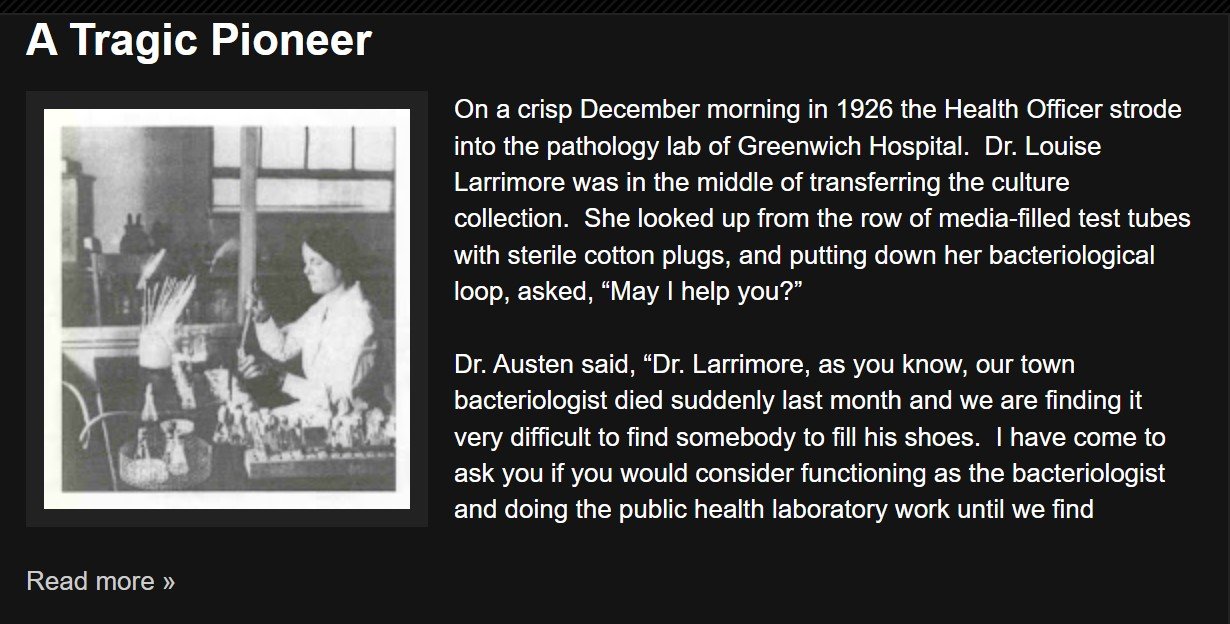THE HISTORY OF
Medical Laboratory Science
We were once described as the “silent partners to Aesculapis (god of medicine)”
Have you ever listened to those who have worked this career for 20-30 years. It’s crazy how the lab has changed. Share your favorite story below!!!
What have you heard or experienced?
Do you know an interesting story about the lab?
With so many of our colleagues retiring and the large age gap between the generations of Med Techs a lot of knowledge about the field and the stories of its history will soon be forgotten. Please share your story or ask your colleagues about there experiences so we can keep these stories and our history alive for future generations of Med Techs1
THE TIMELINE OF
Medical Laboratory Science
ORIGINS
From Hippocrates (the father of modern medicine) to Antoni van Leeuwenhoek (father of the microscope/microbiology) the origins of our career started with physicians and pathologists. It wasn’t until the late 19th century that clinical laboratories emerged.
19th Century
After the Civil War woman were allowed to attend college. Though those who wished to work after college were limited, as the concept of college was though to give woman self fulfillment and become better wives or mothers.
It wasn’t until several epidemic outbreaks in the late 19th century (smallpox, typhus, yellow fever, and scarlet fever) that more jobs were needed for lab testing in patient care. Pathologist started hiring young woman and train them to preform simple laboratory tests. During this time there were no standards.
1928
In 1928 the ASCP established the Board of Registry. The next 20 years academic requirements, establishing titles, and deciding what practices are ‘purely mechanical’ or requiring ‘little thought’. Pathologist argued between keeping salaries low because the job was just temporary vs elevating services and status of what the called clinical pathology.
In the 1930s and beyond more agencies were established or recognized the career we do. This includes CAP, NAACLS, ASCLS (originally named the ASMT) .
1980s
In the 1980s career opportunities expanded greatly but the number of people working who were over 65 years old started increasing dramatically. During this same time Medicare/Medicaid programs increased the demand for laboratory testing. With many factors including a very underwhelming salary, little respect/recognition, increased automation, and colleges/universities cutting programs this career has kept people away for 20 years.
Featured Stories:
Henrietta Lacks and the HeLa cell line
Henrietta Lacks was one of many patients who unknowingly donated their cells to Hopkins in 1951. It all started when she was just 31 and went to the doctor to have a ‘knot’ on her cervix checked out. She ended up having a particularly virulent form of cervical cancer. She was treated but later succumbed to the disease, leaving behind her children and husband. Unbeknownst to her or her family her cells were used for not only diagnosis of the disease, but for research purposes. Her cells were bought and sold to other scientists, while being experimented on for research about diseases and genetics. As well as develop new medical treatments and vaccines, in which companies made millions. But did Henrietta’s family get anything? No. They actually didn’t even find out this was happening to their mother or wife’s cells until well after she had passed. They didn’t find out a part of her was still living on and being experimented on until 1973. How would that make you feel?
The History of the Pregnancy Test
Pregnancy tests did not always come in an easy-to-use, sterile kit giving you results within only minutes. It is believed pregnancy test started in ancient Egypt with pregnant woman urinating on wheat or barley seeds. If the seeds sprouted quickly (over several days) she was pregnant. In the 1930s rats and later rabbits were injected and later dissected to see if woman were pregnant. But the most talked about practice was with frogs, the Hogben test. From the 1940s-1960s tens of thousands of African clawed frogs were imported around the world into frog-labs, hospitals, and even pharmacies. Technicians would inject female frogs with urine into their hind leg and place them back into their terrarium. The following morning technicians would check to see if eggs were dotting the water. It is interesting how the hormone humans produced when pregnant (human chorionic gonadotropin) also kicks off the ovulation in the frog when introduced. Immunological test kits introduced in the 1960s and at home test kits in the 1970s left the frogs without work, but many lived on. African clawed frogs can be found living around many urban areas today, where they were likely released into the wild after hospitals no longer had use for them.
Does your hospital have an old fridge or terrarium floating around with an in interesting past?
Images from a 1938 article in the British Medical Journal by Edward R. Elkan that helped popularize the Xenopus pregnancy test among physicians.
Would you like to learn about more about the History of MLS?
Additional Resources - Links to other websites:





![Title: [Continental Carbon Company] Creator: Richie, Robert Yarnall (1908-1984) Date: July 25, 1937 DeGolyer Library, Southern Methodist University](https://images.squarespace-cdn.com/content/v1/62f6a09a74ef7f0ca7ae9e42/419fbff0-f087-480f-88ad-965d9babc81c/lab3.jpg)









